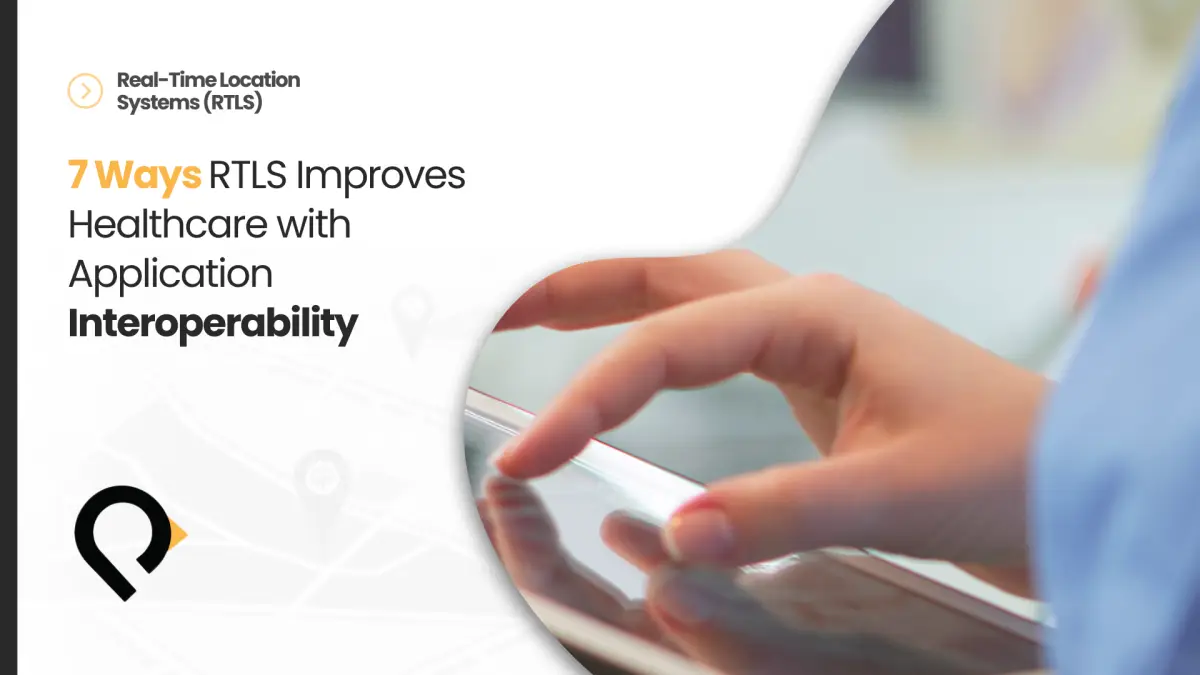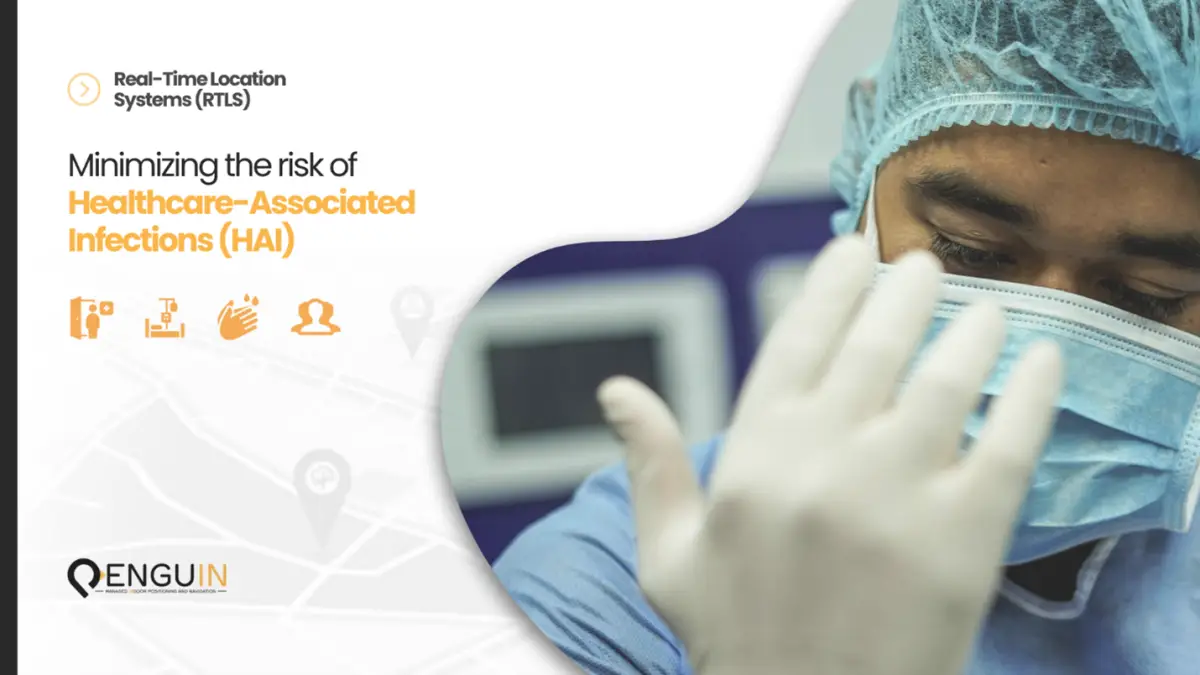As the healthcare sector continuously adopts new technologies to improve care, a careful examination of the effectiveness of digital advancements becomes imperative. Amid this review, the convergence of Real-Time Location Systems (RTLS) health care, automation, and application interoperability emerges as a transformative influence, redefining the operational landscape of healthcare facilities.
What is Interoperability in RTLS healthcare?
In healthcare, interoperability denotes the capacity of diverse information technology systems and software applications to communicate, exchange data, and utilize the shared information efficiently.
This involves some choke points like the seamless sharing of health information among various healthcare systems, encompassing electronic health record (EHR) systems, medical devices, and other health information technologies.
The integration of location services
The incorporation of location technologies, real time tracking, status, and sensory data into existing technological frameworks is key for achieving improved location accuracy. This integration serves as a central requirement, facilitating the efficient coordination of diverse components within the system. By strategically merging location data with pre-existing technological investments, healthcare facilities can optimize operational processes and enhance the experience of caregivers and improve patient care.
With this foundational understanding, let’s delve into the pivotal role that healthcare RTLS system plays within this framework. We will highlight the top 7 aspects of the use of RTLS in healthcare that affirm its significance within the broader context of interoperability and its transformative impact in the respective industry.
1. Unified Integration Standards
A RTLS healthcare system should smoothly sync with and enhance the current technologies and IT infrastructure in healthcare settings. It ought to seamlessly meld into the existing IT framework, creating a fluid and engaging partnership with other technological components used in the healthcare facility. This ensures a seamless exchange of information among diverse healthcare systems, streamlining the often-tricky process of integrating data in healthcare environments.
2. User-Friendly Adoption
Streamlining workflows becomes more than a convenience when healthcare RTLS applications can prioritize user-friendly features to accelerate adoption. By minimizing training periods and creating an environment favorable to technology acceptance, healthcare staff can efficiently incorporate healthcare RTLS solutions and RTLS technology into their routines, leading to increased productivity and satisfaction.
3. Resource Optimization
Beyond its real-time tracking capabilities, effective healthcare real time location services address the challenge of resource optimization. By providing insights into asset utilization, staff allocation, and equipment availability, healthcare facilities can minimize unnecessary expenses, ensuring a more efficient allocation of resources.
4. Real-Time Patient Data Access
The automatic integration of location data with Electronic Health Records (EHR) is likely the most critical of all. This integration empowers healthcare providers with timely and accurate information, enabling them to make informed decisions promptly. Through received signals in real-time, they bridge the gap between RTLS healthcare systems and EHR, further enhancing patient care and contributing to more efficient and effective healthcare delivery. This advanced integration can also automatically populate billing and coding needs natively, saving administrative time and ensuring invoicing is accurate.
5. Facilitated Communication
Integrating functionalities such as nurse call systems and staff duress alerts with the RTLS network adds an additional layer of communication efficiency. Through the use of active RFID tags and RTLS for urgent care, this ensures that healthcare staff can promptly respond to patient needs or emergencies. RFID tags communicated via infrared IR to further enhance the overall responsiveness and effectiveness of healthcare delivery.
One study showed that the majority of a nurse’s time, specifically 38.6% (equivalent to 214.2 minutes), was observed to be spent at the nurse station, with less than one-third (171 minutes) allocated in the patient room. This highlights an opportunity for healthcare RTLS software to play a crucial role in optimizing a nurse’s time, redirecting their efforts towards more valuable actions.
6. Proactive Security Measures
In healthcare settings, health and safety RTLS systems should make security a top priority. They safeguard both staff and patient information, keep tabs on activities, and offer administrators improved visibility. This enhanced visibility empowers administrators to take proactive measures, ensuring comprehensive safety and adherence to data protection standards.
7. Strategic Investment
Viewing RTLS for healthcare solutions as strategic investments involves aligning them with the long-term vision and goals of healthcare facilities. Beyond immediate gains, this approach considers the scalability, adaptability, and future-proofing of the technology, ensuring that the investment continues to add value as the healthcare landscape evolves.
Technology Talks: BLE 5.1 in RTLS for Hospitals for Simplicity and Affordability
At the core of the user-friendly and cost-effective nature of RTLS healthcare applications lies Bluetooth Low Energy 5.1 (BLE). This technology not only guarantees technical robustness but also ensures compatibility with ease. BLE 5.1, with its array of versatile RTLS tags, minimal power consumption, and extensive compatibility, serves as the foundational element enabling healthcare RTLS applications to seamlessly integrate into healthcare settings. This harmonious integration is a testament to the interoperability facilitated by BLE 5.1, providing both technical excellence and adaptability within the healthcare environment.
SEE ALSO: https://penguinin.com/ultra-wideband-uwb-vs-bluetooth-low-energy-ble-5-1/
Penguin Location Service ™
In the realm of healthcare, the thoughtful application of real-time tracking can make a significant impact on staff and patient safety, as well as operational efficiency. This is where Penguin steps into space, offering a thoughtful approach to healthcare. PenTrack, a family of products and mobile devices, is caringly designed to provide not just prompt but also cost-effective results. We offer the necessary hardware and software along with our advanced AI-powered location engine, ensuring efficiency and precision. Our solutions seamlessly integrate into physical and software environments with minimal disruption, aligning perfectly with diverse settings.
Discover the thoughtful future of healthcare with Penguin. Book your free consultation today: [email protected]
References
1. Hendrick A, Chow M, Skierczynski B, and Lu Z. A 36-Hospital Time and Motion Study: How Do Medical-Surgical Nurses Spend Their Time? The Permanente Journal. 2008;12(3):25–34.


